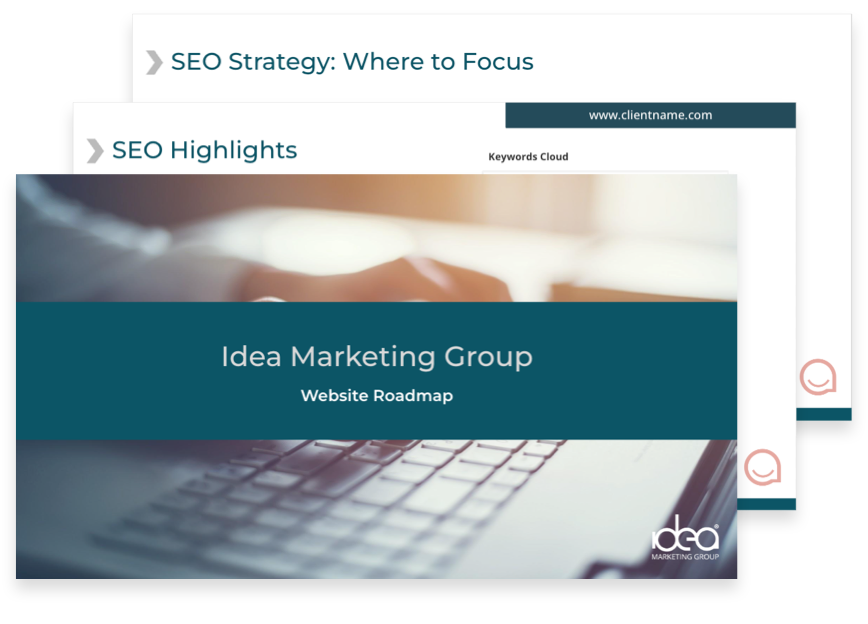Things to Consider for a Website Redesign
A website redesign can feel overwhelming, here are simple questions to help break it down.

Are Visitors Recognizing Your Brand When They Visit Your Website?
Is your site still a dime piece? Or has your brand grown and left your website behind? It’s important that not only the colors and styles of your brand are updated, but also the content. Your company might have new goals or even a whole new personality and your website should represent that.
Is it resistant to change? Updating your site shouldn’t make you want to pull your hair out. As an extension of your business, it should be constantly updated; and just like the frontend of your site, the backend should be clean and clear to navigate. It should be easy to constantly update in a content editor, not hardcoded. Adding images, links, and new pages shouldn’t take all day!
Have Your Conversions or Sales Started to Decrease?
Is her milkshake still bringing all the users to the yard? Maybe it’s time to start looking at your landing pages and calls to action. Take a deep dive into the layout of those pages.
Are you sending the right message? Or is the message not even being found? If not, then now is the time to make the changes to your customers’ journey and what they see along the way.
Can it roll with the punches? Is your site optimized for mobile (responsive)? If not, it should be! Depending on your target demographic, users might only be viewing your website on mobile. And if your site can’t adapt, users will quickly run away.
Can you find her in a crowd? As a business, you should be aware of how your site is performing on all platforms. As we know, not all browsers are the same but it’s important your website doesn’t falter with any of them.
Are you being found in search engines? Remember your website is a living entity, it needs continual attention to grow and thrive. Just like a house plant needs water and sunshine, your website needs new or updated content to stay relevant to search engines.
What are the analytics telling you? It’s important to know where users are coming to your site from and what pages they land on. Knowing this information will not only help you be found but help you be SEEN!
What Journey is Your User Taking?
Does it take a map and a compass to navigate through your site? Just like a road trip, the user has a final destination, but getting there shouldn’t be difficult or boring! User journey maps are a great tool to help visualize the user’s interactions. These findings will help the designer prioritize each task according to the user’s needs. When creating a user journey map there are three things to consider; User persona, scope, and touchpoints.
Who is my user? Don’t assume you know your user. Do the research. Take the time to discover much more than just their age, sex, likes/dislikes. Are they the decision-maker or just the bridge between you and the decision-maker? Are they tech-savvy? Do they know what they want or do they need options? Knowing this information will help eliminate false assumptions.
Have you defined the scope? Scopes can show beginning to end experiences to more detailed maps that hone in on one particular interaction, like signing up for a newsletter. Each scenario describes the real or anticipated action that the journey map addresses.
What are my touchpoints? These are the physical actions and interactions the user has with your website. It’s important to anticipate not only all of the main touchpoints but all items associated with each touchpoint. For example, “Get an Estimate” channels can be — Contact Us or Get More Information.
Are You Leveraging Heatmaps to Better Understand the User’s Journey?
Bring the Heat! Heatmaps are visual representations of the activity on your site by using warm and cool colors to help identify high traffic areas and interactions. The best way to utilize a heat map is to look into the pages that have the most impact on your conversion rate: the home page, landing pages, and high-conversion blog posts.
What’s happening on your homepage? Your homepage is the introduction to your business. Pay attention to which area users are scrolling through and if they are hovering over your main content and clicking on call-to-actions. This will help identify exactly where the most vital elements of your homepage need to live, reduce your bounce rate, and increase your conversion rate!
Is your landing page successful? When successful, landing pages convert each user into a lead. Knowing the movement of the user will help cast the best design to gain more leads.
Are your blog posts converting? Call to action (CTA) placement on your blog posts can greatly improve your conversion rate. For example, a single CTA at the end of your post can be visually engaging, but may only generate a small number of leads. Your user might be more inclined to click an anchor text CTA that lives above the fold at the top of the page. Giving the user more opportunities to connect is key!





